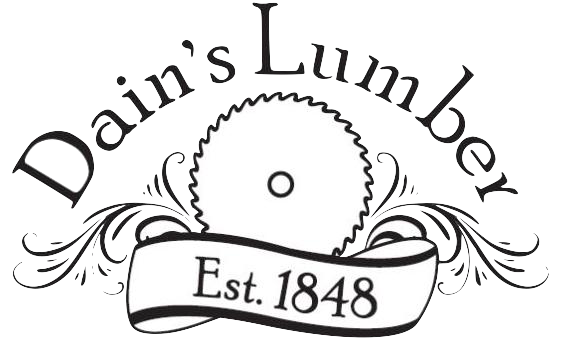
A deciduous hardwood. Other common names are yellow poplar and tulip poplar. Average height: over 100 feet. Average trunk diameter: 3 to 6 feet. The 1992 National Register of Big Trees identifies today`s largest yellow poplar. It is found in Bedford, Virginia and is 146 feet tall with a canopy of 125 feet spread and a trunk circumference of 374 inches. Poplars grow from southern New England southward to Florida and westward to Missouri. It is the state tree of Indiana and Kentucky.
The yellow poplar grows quickly into a tall straight tree. It is found alone in open, rich, moist soil. Because of its fast maturity the lumber from poplar is lightweight and soft for a hardwood. But it is strong, durable and seasons well resisting warpage once it is dried. Because the trunk has no limbs or branches, except at the very top, the wood has no knots. It is straight grained and evenly textured making it rewarding to work with. It cuts and sands well, keeps its edge and resists splitting. The sapwood is cream color; the heartwood is pale brown with occasional yellow-green streaks. The wood stains well and can easily be made to resemble walnut or maple. Because it takes paint exceptionally well, it is often painted.
An abundant and stable wood, poplar use dates back to the East Coast Native American populations. Their long dugout canoes were carved from the trunks of the tall yellow poplar. Early American settlers used it in furniture and for interior applications. It was, and still is, used for boatbuilding. Recently poplar has been used in the manufacture of plywood. Due to its affordability, it was, and still is, used in a multitude of inexpensive wood products such as toys, broom handles, boxes, crates, baskets, food containers, popsicle sticks and tongue depressors. Before they were made of metal and plastic, Venetian blinds were made of poplar. Poplar is used as the interior components of fine furniture and cabinetry. Importantly, it has recently become a satisfactory, fine, hardwood alternative to clear pine for interior millwork: built-in furniture, cabinets, shelving and moldings, including door jambs and cornices. Due to the huge export market for poplar and its increased popularity in the domestic market, it is less available than previously, but the price remains very attractive.
